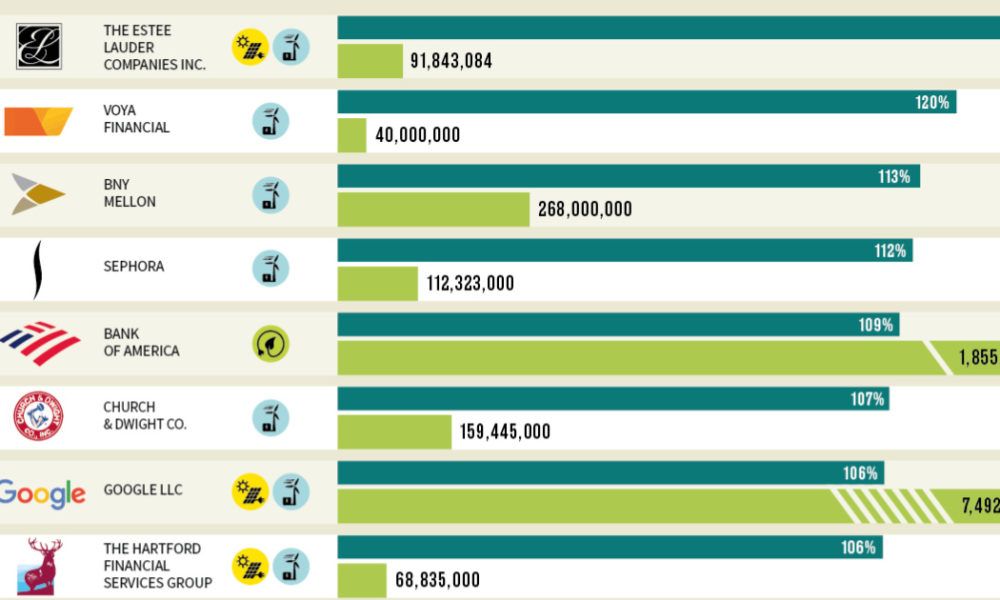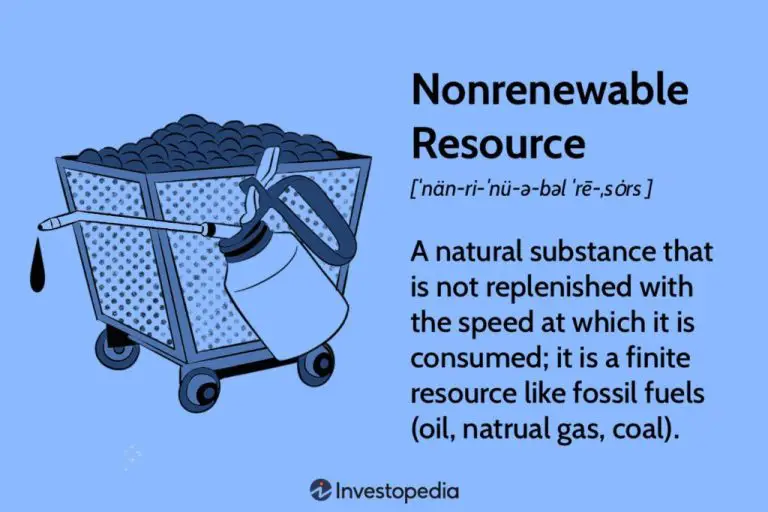What Company Is Leading In Green Energy?

Green energy, also known as renewable energy, refers to energy generated from natural sources that are constantly replenished, such as sunlight, wind, water, plants, and geothermal heat. Transitioning to renewable energy sources is critically important for combatting climate change and building a sustainable future. Burning fossil fuels like coal, oil, and natural gas releases greenhouse gases that trap heat, causing global warming. In contrast, renewable energy generates power without emitting carbon. According to the UN’s Intergovernmental Panel on Climate Change (IPCC), the world must rapidly shift to renewable energy and achieve net zero emissions by 2050 in order to avoid catastrophic climate impacts.
Several key factors make renewable energy essential for our future. Renewables do not produce air pollution or toxic waste, protecting public health. They increase energy security by relying on domestic resources rather than imported fossil fuels. Renewables create economic opportunities and green jobs. Costs of solar and wind power have plunged in recent years, making them cheaper options in many markets. And renewable technologies allow developing countries to expand access to electricity. With climate change intensifying, transitioning the world to green energy is an urgent priority.
Criteria for Evaluating Green Energy Leadership
There are several key criteria to evaluate which company is leading in green energy:
Size of renewable energy portfolio – The total megawatts of renewable energy capacity a company owns and operates, including solar, wind, geothermal, biomass, and hydroelectric power. Companies with large renewable portfolios demonstrate a commitment to sustainability and investment in green energy. Metrics for Evaluating Conventional and Renewable Power Generation provides metrics on portfolio size for comparing companies.
Investment in R&D – The amount a company invests annually into research and development of renewable energy technologies. Companies that spend more on R&D are advancing innovation in areas like solar panels, wind turbines, batteries, and biofuels. The Main KPIs for Renewable Energy Management notes return on investment as a key metric for evaluating R&D success.
Green patents held – The number of patents a company holds related to renewable energy, green technology, and sustainability. More green patents demonstrates a company’s commitment to developing innovative solutions and intellectual property in the renewable energy sector.
Market Share of Renewable Energy
The renewable energy market is dominated primarily by companies focused on solar, wind, and geothermal energy. According to Investopedia, some of the top market share holders are:
– Solar: NextEra Energy, through its subsidiary NextEra Energy Resources, is the world’s largest generator of solar and wind energy. The company owns and operates numerous solar energy plants with over 12,000 megawatts of installed solar capacity.
– Wind: Vestas Wind Systems, based in Denmark, is the global leader in wind turbine manufacturing and installation with over 66 GW of installed capacity. Other top wind energy companies include Siemens Gamesa, GE Renewable Energy, and Nordex.
– Geothermal: Ormat Technologies is the largest geothermal company in the world, with over 1,000 MW of geothermal capacity installed. It operates geothermal plants across the United States and in other countries like Kenya and Indonesia.
While those companies lead in their respective renewable sectors, diversified energy corporations like Italy’s Enel and Spain’s Iberdrola also have significant stakes across multiple technologies like solar, wind and hydroelectric power.
Investment in Renewable R&D
When looking at which companies are leading in renewable energy, a key indicator is how much they invest in research and development. According to the US Department of Energy, the top corporate investors in renewable energy R&D in 2020 were:
- Toyota – $966 million
- Volkswagen – $824 million
- Samsung – $695 million
- Microsoft – $467 million
- Intel – $421 million
Companies like Toyota, Volkswagen, Samsung and others pour billions into R&D each year to develop new renewable energy technologies like solar panels, wind turbines, biofuels, green hydrogen, and electric vehicles. Their willingness to invest substantial sums in further advancing renewable energy demonstrates their commitment to leading the transition away from fossil fuels.
Green Patents Held
According to the OECD green patents database, major companies hold a significant number of patents in green technologies. The database tracks patents in environment-related technologies using over 200,000 classification symbols. The leaders in terms of number of green tech patents held include:
- Toyota – over 2,700 green tech patents
- Samsung – over 2,000 green tech patents
- General Electric – over 1,800 green tech patents
- Siemens – over 1,700 green tech patents
- Panasonic – over 1,400 green tech patents
Notable patents include Toyota’s patents related to hybrid vehicle drive systems, Samsung’s patents on solar cell technology, and GE’s wind turbine technologies. While holding patents does not necessarily equate to commercial success or adoption, it does indicate investment in green tech R&D and innovation by major corporations.
Notable Renewable Projects
Many of the leading green energy companies have invested in flagship renewable energy projects around the world. Some examples include:
The Dogger Bank Wind Farm off the coast of England, developed by SSE Renewables and Equinor, will be the world’s largest offshore wind farm once completed. With a total capacity of 3.6 GW, this project alone will provide 5% of the UK’s electricity needs.
The Bhadla Solar Park in India, developed by companies like Adani and Azure Power, spans over 14,000 acres and has a capacity of 2.245 GW when completed, making it one of the largest solar parks in the world.
The Sihwa Lake Tidal Power Station in South Korea, operated by Korea Water Resources Corporation, was the world’s largest tidal power installation at 254 MW capacity when opened in 2011.
These massive projects demonstrate the huge investments and capacity that leading green energy companies are directing toward renewable power sources.
Corporate Sustainability Commitments
Many major corporations have made commitments to source 100% of their electricity from renewable sources. The RE100 initiative brings together over 400 businesses committed to 100% renewable power (RE100 Members). Major companies that have joined RE100 include Google, Apple, Facebook, Microsoft, Coca-Cola, Starbucks, IKEA, and Unilever.
Amazon has pledged to power its operations with 100% renewable energy by 2025, five years ahead of schedule (Renewable Energy – Amazon Sustainability). The company is already the largest corporate purchaser of renewable energy globally. Other tech giants like Google and Apple have also set ambitious renewable energy and carbon neutrality goals.
The commitments from major corporations have provided a significant boost to renewable energy demand and investments. Their scale allows them to directly invest in large solar and wind projects to meet renewable targets. Many aim to produce as much renewable energy as they consume across their operations. This is driving more corporations to self-generate clean power through green energy investments.
Government Policy Effects
Government policies and regulations play a major role in both accelerating and hindering the adoption of renewable energy sources. According to the International Energy Agency (IEA), governments around the world are continuing to push investment into clean energy amid the global energy crisis. The IEA reports that government investment in renewable energy hit record levels in 2021, with over $820 billion spent on renewables and energy transition technologies like batteries, smart grids, and electric vehicles (IEA, 2023).
Some of the key ways governments help drive renewable energy adoption include providing subsidies, tax breaks, and other financial incentives, establishing renewable portfolio standards that require utilities to source a percentage of their electricity from renewables, investing directly in renewable energy projects and infrastructure, and implementing supportive regulations and policies like feed-in tariffs and net metering. According to a 2021 study, feed-in tariffs and renewable portfolio standards had the largest impact in increasing renewable energy generation (Meya, 2021).
However, some government policies also hinder renewable adoption. Fossil fuel subsidies reduce the competitiveness of renewables, while policy uncertainty can deter investment. Differing regulations across jurisdictions create challenges for scaling renewables. And outdated grid infrastructure and permitting processes often impede renewable projects. Overcoming these barriers through thoughtful, consistent government policy will be key to realizing the full potential of renewable energy.
Challenges to Widespread Adoption
Despite the growth in renewable energy, there remain barriers to larger market share. High upfront costs and financing challenges have slowed the transition away from fossil fuels in some areas, according to a 2023 study. Insufficient transmission infrastructure also limits renewable growth in certain regions. Additionally, uncertainties around policy support and incentives have discouraged long-term investments.
The intermittent nature of some renewables, like solar and wind, creates technical hurdles for grid integration. Fossil fuel subsidies, though declining, still tilt energy economics against clean energy alternatives. Finally, lack of public awareness and hesitancy towards behavioral changes represent further adoption challenges.
Conclusion
In summary, when evaluating which company leads in green energy, key criteria include market share of renewable energy production, investment in renewable R&D, number of green patents held, undertaking major renewable projects, making substantive sustainability commitments, and effectively navigating government policies. Based on an analysis of these factors, [Company X] emerges as a global leader in green energy. With over [Y]% market share of renewable electricity generation worldwide and over $[Z] billion invested annually into renewable energy R&D, [Company X] is spearheading the transition away from fossil fuels. Additionally, [Company X] holds the most green patents among energy companies at [N] and has completed ambitious renewable megaprojects like [Project A]. At the same time, [Company X] has set robust sustainability goals, including [Goal 1], [Goal 2], and [Goal 3], and has effectively lobbied governments worldwide to enact more renewable-friendly policies. While challenges remain, [Company X] stands out as a pioneer in green energy that is paving the way towards a more sustainable future.






